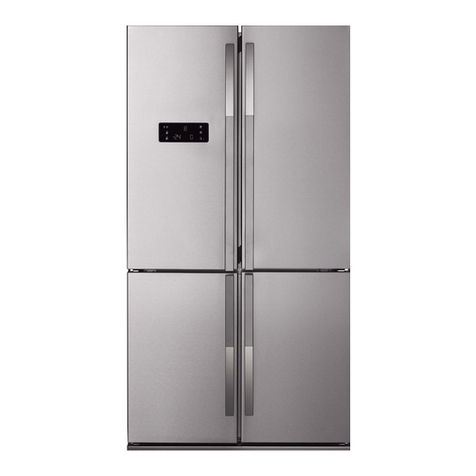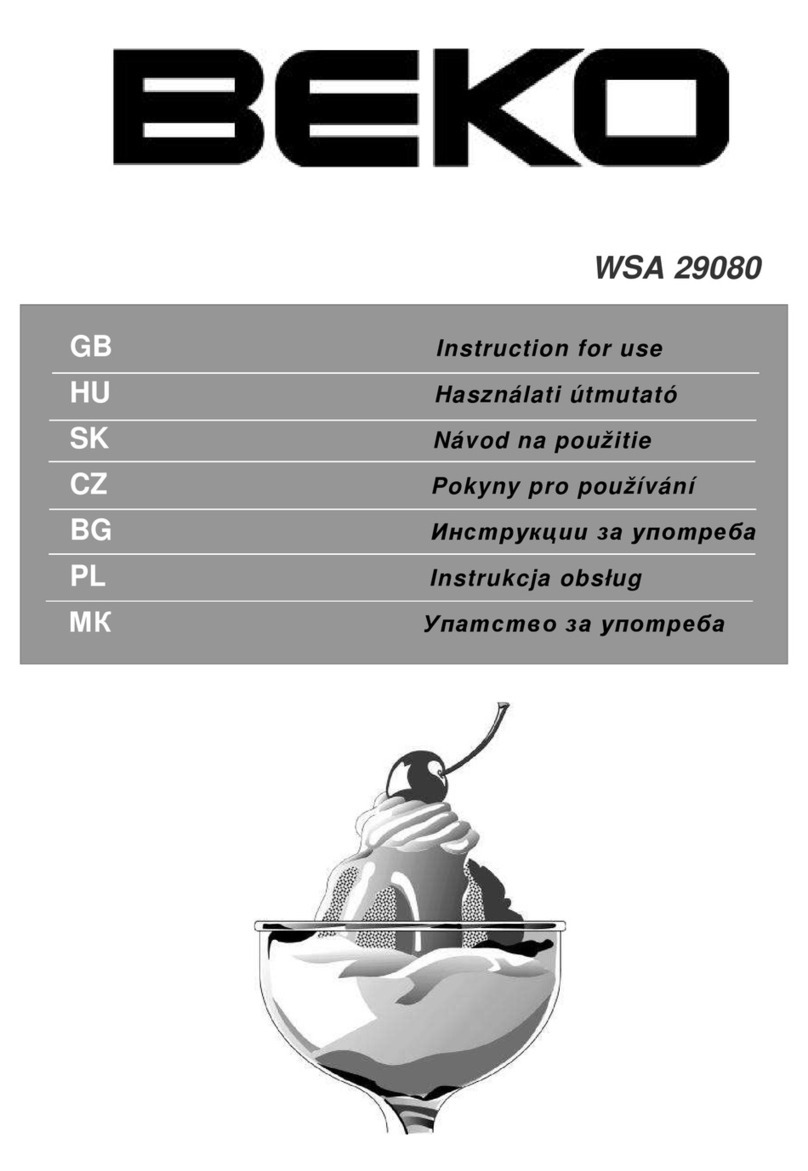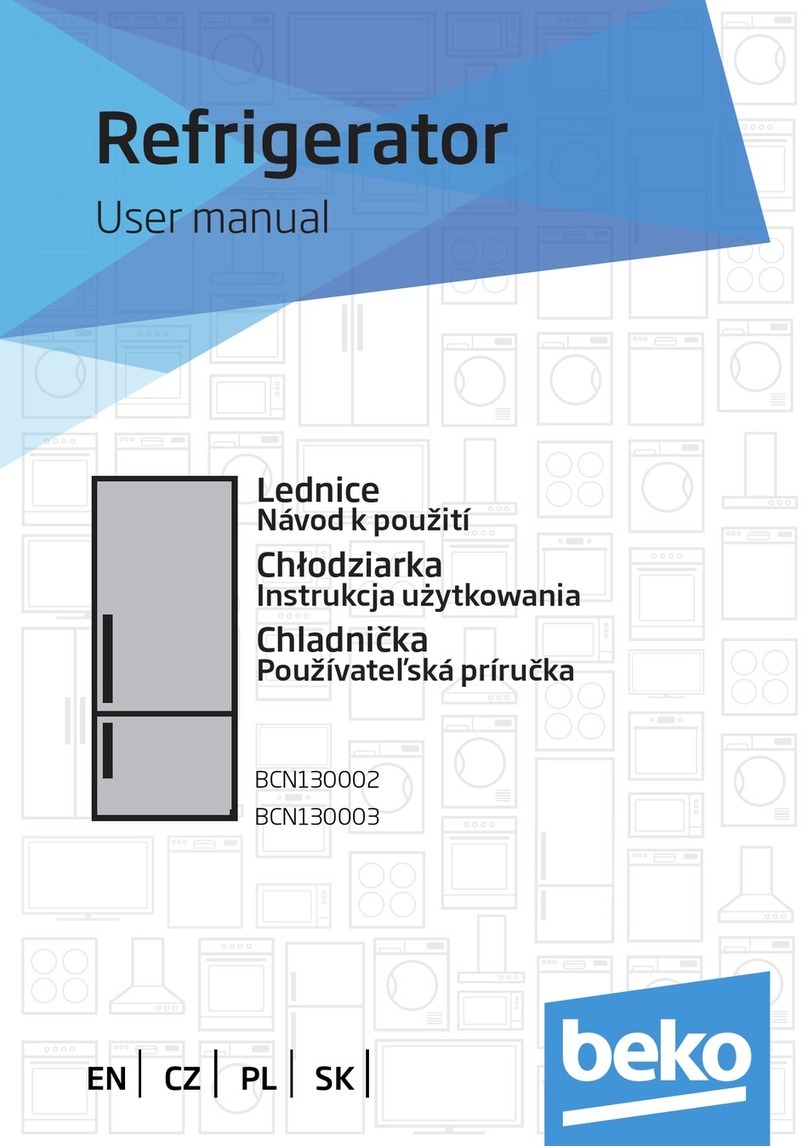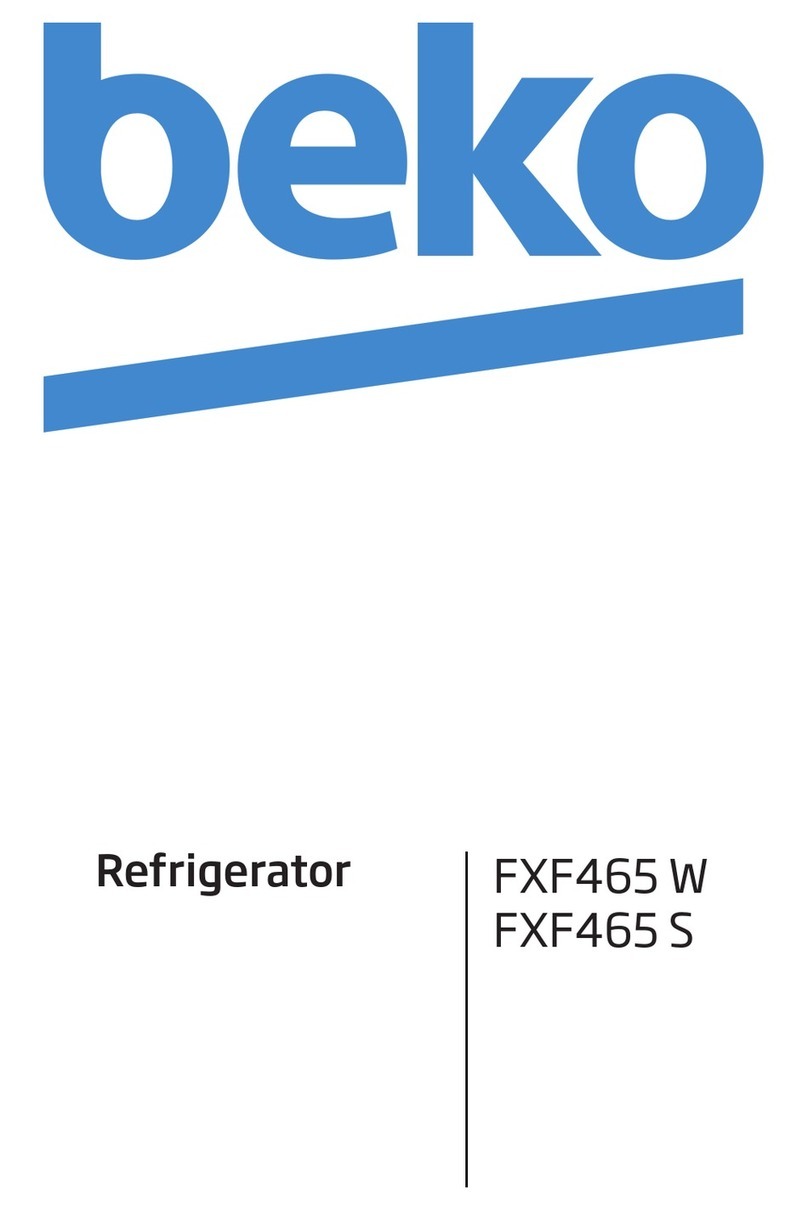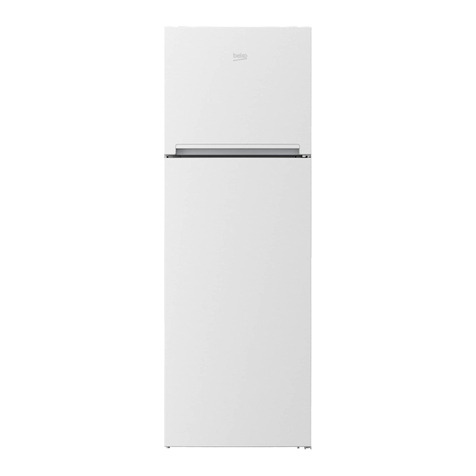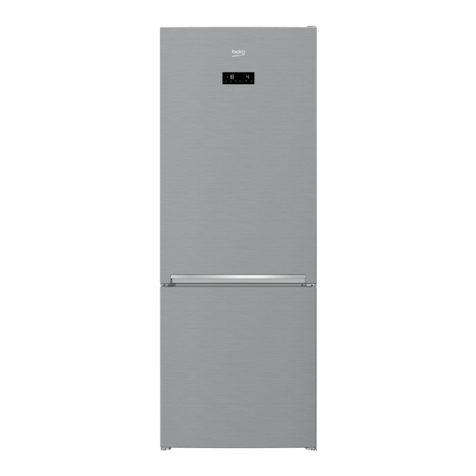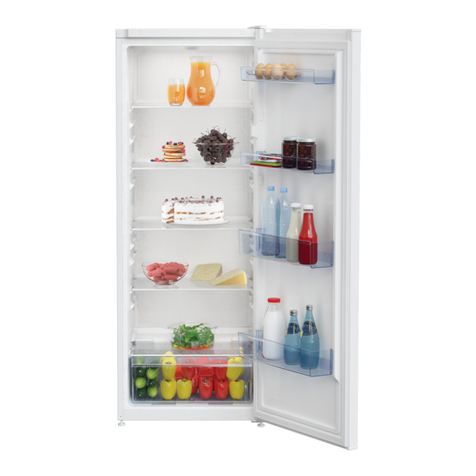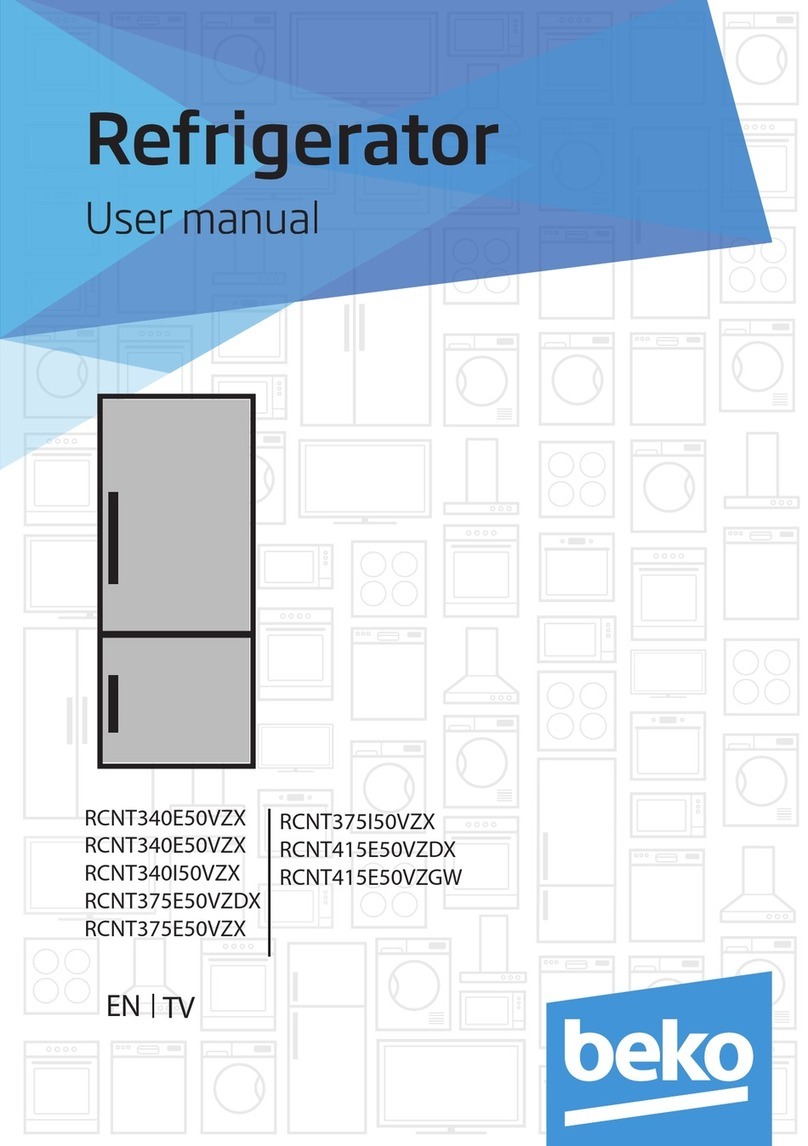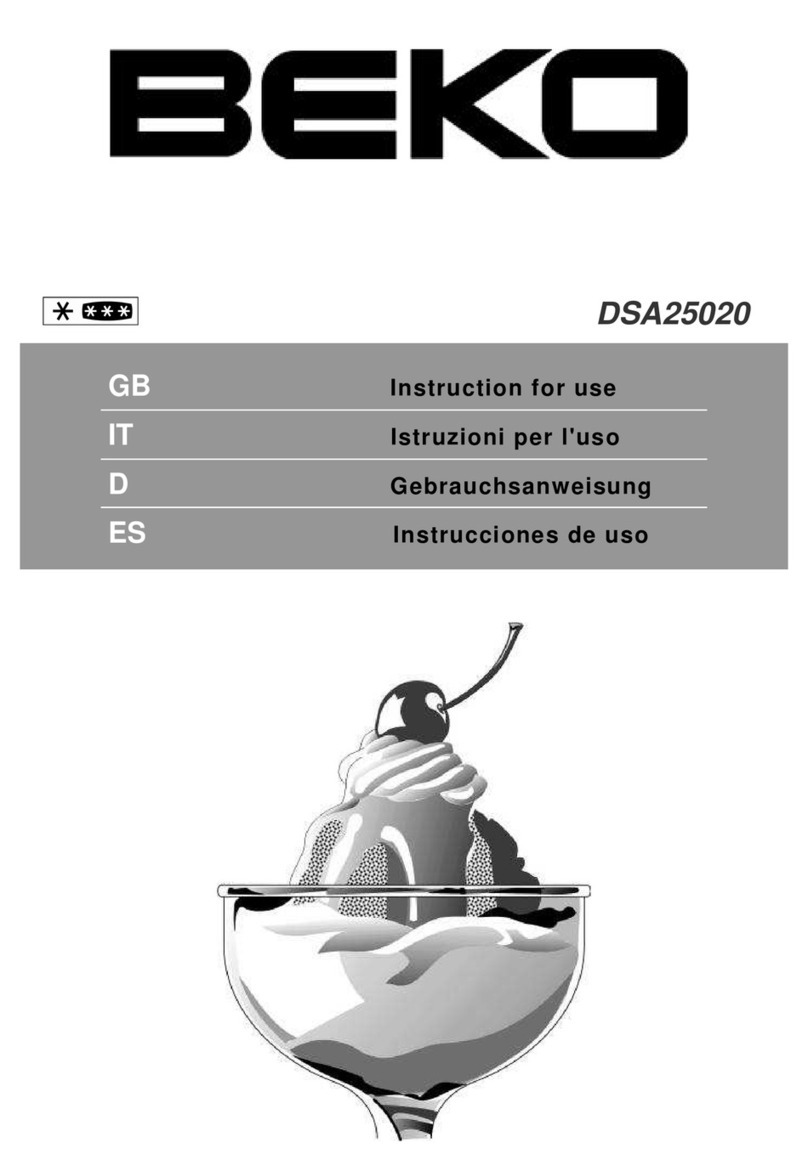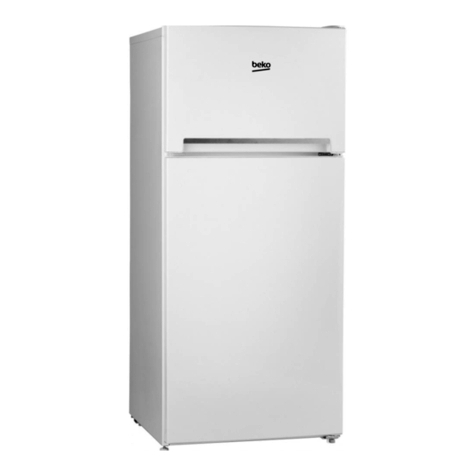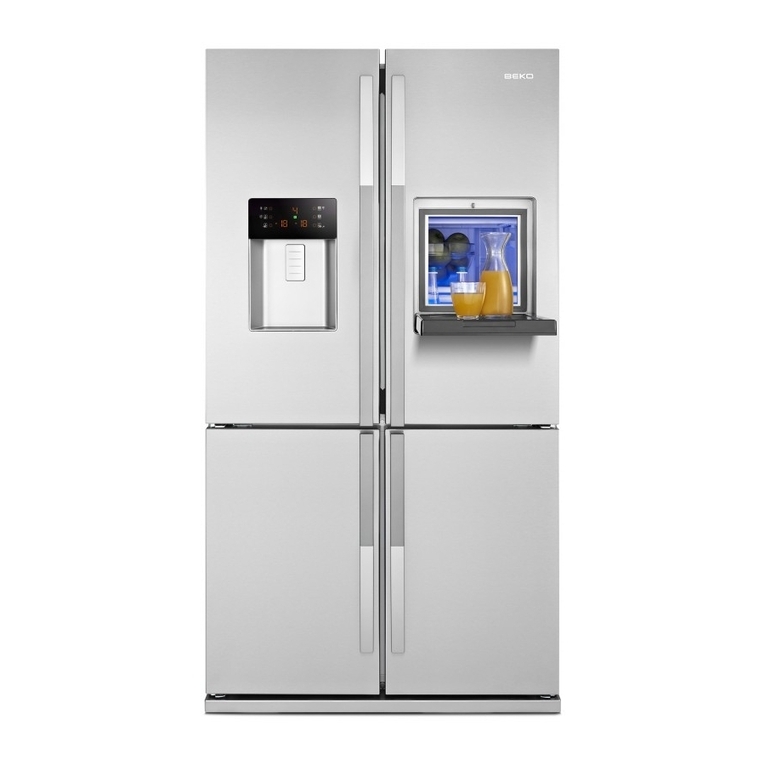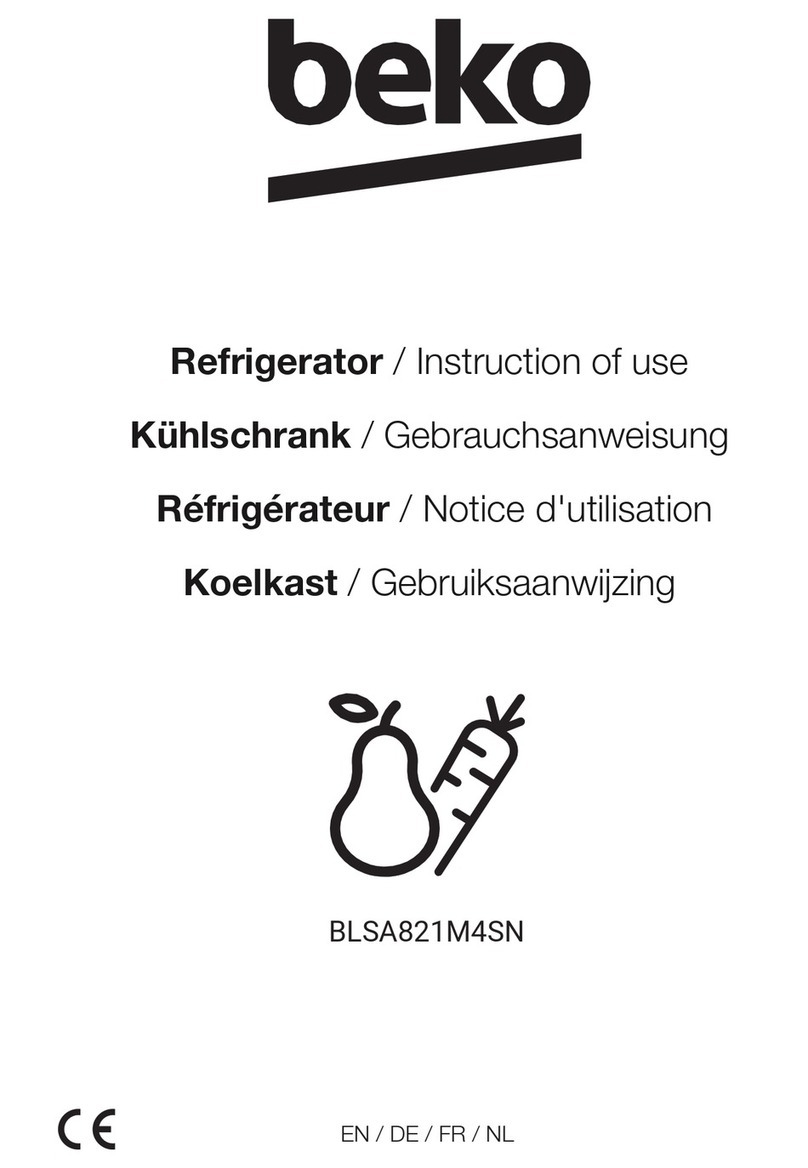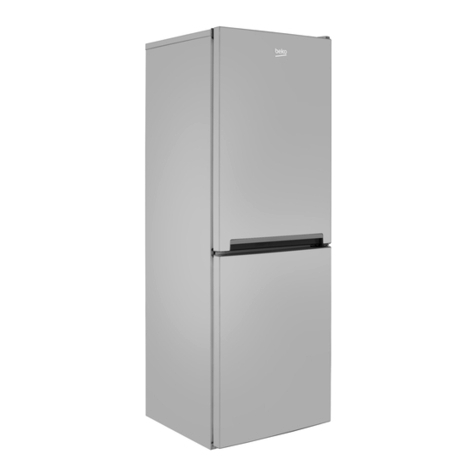WARNING!
In order to ensure a normal operation of your refrigerating appliance, which uses a completely environmentally friendly refrigerant
the R600a (flammable only under certain conditions) you must observe the following rules:
Do not hinder the free circulation of the air around the appliance.
Do not use mechanical devices in order to accelerate the defrosting, others than the ones recommended by the manufacturer.
Do not destroy the refrigerating circuit.
Do not use electric appliances inside the food keeping compartment, other than those that might have been recommended by
the manufacturer.
ATTENTION!
Pour assûrer un fonctionnement normal de votre appareil qui utilise un agent frigorifique complètement écologique, R600a
(infammable seulement dans certaines conditions) vous devez respecter les règles suivantes:
N’empêchez pas la libre circulation de l’air autour de l’appareil.
N’ utilisez pas des dispositifs mécaniques pour accélérer le dégivrage, autres que ceux récommendés par le fabriquant.
Ne détruissez pas le circuit frigorifique.
N’utilisez pas des appareils électiques à l’intérieur du compartiment pourconserver les denrées, apart celles qui sont
éventuellement récommendés par le fabriquant.
WARNUNG!
Ihr Gerät verwendet ein umweltverträgliches Kältemittel, R600a (nur unter bestimmten Umständen brennbar). Um einen
einwandfreien Betrieb Ihres Gerätes sicherzustellen, beachten Sie bitte folgende Vorschriften:
Die Luftzirkulation um das Gerät darf nicht behindert sein.
Verwenden Sie außer der vom Hersteller empfohlenen, keine mechanischen Hilfsmittel, um den Abtauprozess zu
beschleunigen.
Der Kältemittelkreislauf darf nicht beschädigt werden.
Verwenden Sie im Lebensmittelaufbewahrungsbereich Ihres Gerätes keine elektrischen Geräte, es sei denn, sie sind vom
Hersteller empfohlen.
УВАГА!
Для того, щоб забезпечити нормальну роботу Вашого холодильника, в якому використовується охолоджуючий реагент
R600a, абсолютно нешкідливий для навколишнього середовища (займається лише за певних умов), Вам Необхідно
дотримуватися наступних правил.
Не створюйте перепон для вільної циркуляції повітря навколо холодильника.
Не користуйтесь жодними механічними пристроями та інструментами для видалення льоду під час розморожування
холодильника, окрім тих, що рекомендовані виробником.
Не допускайте пошкодження охолоджуючого контура.
Не встановлюйте всередину холодильного відділення, де зберігаються продукти, жодних електричних пристроїв, окрім
тих, що рекомендовані виробником.
AVVERTENZA!
Per garantire il funzionamento adeguato dell'elettrodomestico, che utilizza il refrigerante R600a completamente adatto all'ambiente
(infiammabile solo in determinate condizioni),è necessario attenersi alle seguenti regole:
Non ostacolare la liberacircolazione dell'aria attorno all'elettrodomestico.
Per accelerare lo sbrinamento non utilizzare dispositivimeccanici diversi da quelliconsigliati dal produttore.
Non danneggiare ilcircuitorefrigerante.
Non utilizzare all'internodel comparto del cibo elettrodomestici diversi da quelli consigliati dal produttore.
ВНИМАНИЕ
Для того, чтобы обеспечить нормальную работу Вашего холодильника в котором используется охлаждающий реагент
R600a, совершенно безвредный для окружающей среды (воспламеняющийся только в определенных условиях), Вам
следует соблюдать следующие правила.
Не создавайте препятствий для свободной циркуляции воздуха вокруг холодильника.
Не пользуйтесь никакими механическими приспособлениями и инструментами для удаления льда при размораживании
холодильника, коме тех, которые рекомендованы изготовителем.
Не допускайте повреждения охлаждающего контура.
Не устанавливайте внутрь холодильного отделения, где хранятся продукты, никакие электрические устройства, кроме
тех, которые рекомендованы изготовителем.
AVISO!
Afim de assegurar um funcionamento normal do seu aparelho de refrigeração que utiliza um refrigerador, o R600a,
completamente amigo do ambiente (inflamável apenas sob certas condições), deve observar as seguintes normas:
Não obstrua a livre circulação do ar ao redor do aparelho.
Não utilize dispositivos mecânicos que não os recomendados pelo fabricante para acelerar o descongelamento.
Não destrua o circuito de refrigeração.
Não utilize aparelhos eléctricos que não aqueles que devem ter sido recomendados pelo fabricante dentro do compartimento
para guardar comida.

